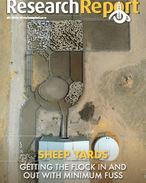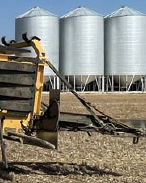This article is 8 years old. Images might not display.
It’s the latest in a string of advances in livestock management technologies, which may helpprovide a solution to many of the challenges associated with keeping sheep in mixed crop and livestock farms.
CSIRO senior research scientist Dean Thomas said farmers were starting to use devices like water point monitors, GPS and drones in their businesses.
However, the trials showed that the trackers could inform broader practical management decisions by monitoring animal growth and health; escapes, predation and theft; water supply; erosion, and pasture quantity and its use.
“Farmers generally rely on gut feel, rules of thumb and visual observations to manage their livestock,” Thomas said.
“We feel we can increase productivity and improve animal wellbeing by developing scientifically-based monitoring products that alert and keep farmers up to date with the wellbeing of their flocks.”
With approximately 74 million sheep in Australia – and more than a billion worldwide, managing the welfare of their flocks continues to pose logistical issues for farmers.
Thomas said the next challenge was to interpret the captured data to maximise its value.
“But to do that, they’ll go back to basics and visually monitor sheep behaviour and productivity across a range of situations.
“We need to build up our data over a number of different scenarios, and then convert all of that into an integrated system for graziers.”
Thomas said sheep breeders would benefit from large numbers of individual sheep being monitored, by picking up desirable phenomic – or trait – information.
“It’s previously been incredibly difficult to answer questions such as, ‘are more active sheep actually healthier and growing faster, or is this an inefficient use of their energy with no productive gain’,” Thomas said.
“Like a team of football players wearing GPS trackers, the individual performance of sheep could be evaluated.”






















